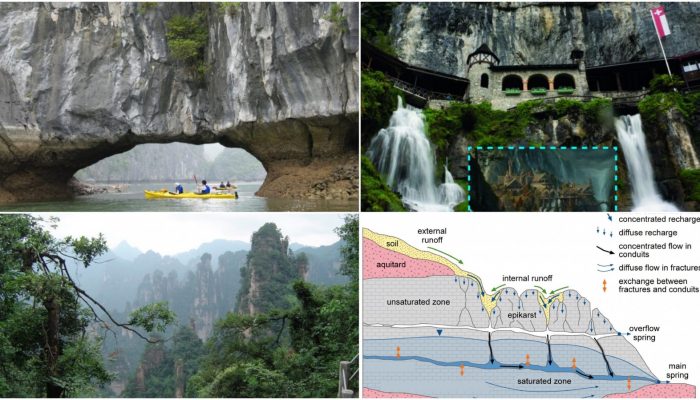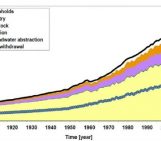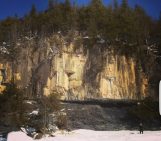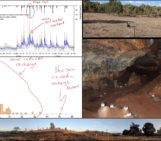
Post by Andreas Hartmann, Assistant Professor in Hydrological Modeling and Water Resources at the University of Freiburg.
Episode 4 – Karst Groundwater: quick and slow at the same time?
We often associate groundwater with large water storage and very slow water movement for instance compared to rivers. But is it possible that groundwater flow can be as quick as stream flow and, at the same aquifer, flow for several months or years before it is reaching the surface again? Of karst, it is possible! When chemical weathering is able dissolve carbonate rock, cracks and fissures may grow to a subsurface channel system that can take vast amounts of water flow (see Of Karst! – episode 2).
The schematic figure below shows how this affects water flow in a karst system. At the surface, water may flow for some distance (external runoff towards the recharge area or internal runoff within the recharge area), before it reaches a dissolution widened vertical crack or fissure. On its way, part of it may slowly infiltrate into the soil but the stronger the rainfall event, the more water will infiltrate quickly into cracks and fissures after being redistributed laterally. Consequently, slow and quick infiltration will be followed by slow and quick vertical flow through the vadose zone. The former through the carbonate rock matrix, the latter through the interconnected system of dissolution caves. Finally, recharge and groundwater flow take place, again quickly through the caves and slowly through the matrix. When passing the system through the cave network, water can enter and leave the system within several hours. When taking the slow and diffuse path, the transit through the system may take months to years.
Because of this behavior, hydrogeologists often speak about the Duality of Karstic Groundwater Flow and storage, although it is known that there is a wide range of dynamics between quick flow through the caves and slow flow through the matrix and that lateral redistribution between the interconnected caves and the matrix takes place at almost every part of the system.

Figure 1: Schematic description of karstic groundwater flow and storage (Hartmann et al., 2014; modified)
A rather uncomfortable lesson on quick flow processes in karst was learned by a group of school students on a trip through a karstic cave in Thailand. Due to the quick recharge processes explained above, the groundwater tables could quickly rise blocking the return path of the group and resulting in a dramatic rescue mission:

In order to predict the impact of interplay of quick and slow karstic groundwater processes on cave water levels or water resources in general, karst-specific simulation models are necessary. If you are interested in those, follow the Water Underground blog’s postings and wait for Of Karst! Episode 5, which will introduce karstic groundwater modelling.

Andreas Hartmann is an Assistant Professor in Hydrological Modeling and Water Resources at the University of Freiburg. His primary field of interest is karst hydrology and hydrological modelling. Find out more at his personal webpage www.subsurface-heterogeneity.com
Further reading: Hartmann, A., Goldscheider, N., Wagener, T., Lange, J., Weiler, M., 2014. Karst water resources in a changing world: Review of hydrological modeling approaches. Rev. Geophys. 52, 218–242. doi:10.1002/2013rg000443
Keep up to date on all WaterUnderground posts by following us on our LinkedIn page! Have an idea of an intriguing post idea? We’d love to hear from you.




